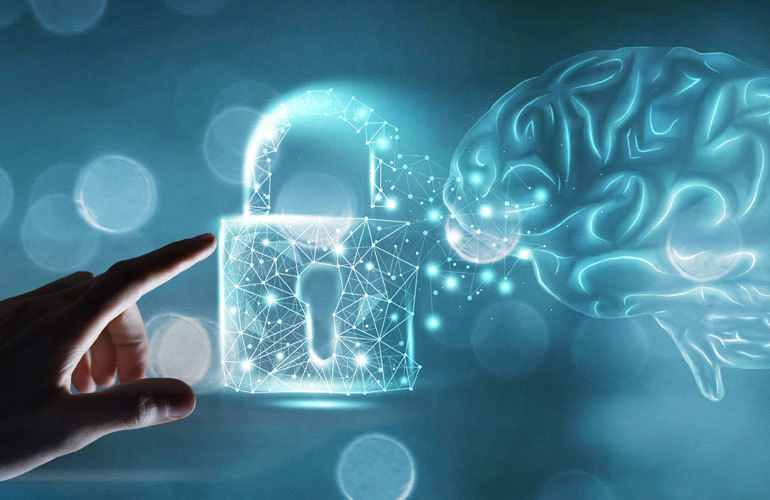
The Power of Menthol: Why I...
VIEW >

Chiropractor’s Guide to Inc...
VIEW >

Not yet a Pro Portal member? Sign up here.
Chiropractors, Physical Therapists, Massage Therapists and other Hands-On Healthcare Professionals are an essential health and wellness resource for individuals of all ages. We partner closely with these professionals on helping people perform better and move ‘pain-free’.
Our topical pain relief products were specifically formulated with these hands-on healthcare professionals (and their patients) in mind. Our fast-acting formulation with penetration enhancers plus 10% menthol, MSM, Glucosamine is like no other. Embracing hands-on healthcare professionals and topical pain relief solutions like Stopain® Clinical provides patients and their families with the ultimate wellness solution.
Visit our clinic locator to find a healthcare professional in your community.

A common condition that we treat and help our patients manage are headaches. How do we as chiropractors treat headaches? In a room full of chiropractic physicians or students, the obvious first answer would be the chiropractic adjustment. We all know the power an adjustment can have and there is plenty of research to support its efficacy in treating headaches. The adjustment influences the nervous system and migraine headaches are, in fact, a disease mediated by the central nervous system.
What other treatment modalities do we utilize to support the adjustment? In my clinic, we utilize an effective blend of proprietary topical applications, like Stopain® Clinical, for immediate symptom relief, soft tissue and muscle releases based on the patient’s musculoskeletal dysfunctions and low level laser therapy to enhance cellular mitochondrial function. A 2018 study revealed that low level laser therapy was able to reduce the number of symptomatic migraine days, reduce pain intensity and reduce the number of medications that subjects had to take. One specific benefit of low level laser therapy when compared to other treatments was in the reduction of sleep disturbances caused by migraines.
The adjustments, topicals, laser, soft tissue and other manual therapies are important treatment tools and they have proven patient interaction after patient interaction to remedy headache symptoms. I view these modalities as important stepping stones in achieving our treatment goals, but the subluxations and soft tissue dysfunctions that we find did not show up overnight. What caused the subluxation in the first place? What caused the muscle spasm and the tension? Yes, the treatment is important, but most people don’t walk into our office seeking a remedy for the headache they have on that particular day—they want a remedy for the headaches they’ve been experiencing for most days throughout their lives—and they want an answer as to why these headaches are happening in the first place.
This brings us to what is, in my opinion, the most crucial and overlooked “modality” in treating headache cases—a thorough diagnosis with subsequent patient education and understanding of this diagnosis. No, I am not referring to the diagnosis as “G44.209 Tension-type headache, unspecified, not intractable”. “G44.209” is a label. I am referring to identifying the source and contributing factors that brought us to this label — the diagnosis beyond the diagnosis—the true diagnosis. Let’s look beyond trying to remedy the symptoms and clearing the acute headache.
What factors are bringing the symptoms into play? These factors could be structural or musculoskeletal of origin (i.e., anterior head carriage, stomach sleeping, etc.), a nutritional deficiency, or there could be other lifestyle conditions affecting the nervous system such as stress or lack of sleep. These lifestyle or habitual factors are common symptom contributors in the primary patient demographic we see in my clinic— professional touring musicians. The touring lifestyle is not conducive to living your healthiest lifestyle. Subsequently, their repetitive motions on stage and while practicing their instrument, which may be biomechanically faulty, are often times complicated by the structural deviations they are experiencing from staring down at their iPhones and slouching on the tour bus and in the green rooms all day.
Another example of a symptom contributor is that most humans are chronically dehydrated. Dehydration can be from insufficient water intake, but it can also be from mineral depletion. Access to nutritious and whole foods is limited and difficult. Highly processed foods are deprived of the minerals our bodies need to function at an optimal level. Even if we’re eating healthy foods, these foods are now being grown in mineral-depleted soils. An imbalance of fluid and electrolytes in the body can certainly result in chronic dehydration headaches. We may need to advise our patients to make diet modifications, supplements minerals and increase their water intake.
Another potential symptom contributor is that for some of our patients, getting regular and optimal sleep can be difficult. According to the American Migraine Foundation, "People living with migraines are between 2-8X more likely to experience sleep disorders, compared with the general public. Those living with chronic migraine—which includes experiencing headache 15 or more days per month—report having almost twice the rates of insomnia as those with less frequent headaches”. We may to need teach our patients on things to avoid (ie. exposure to blue-spectrum light from electronic screens) or practices to implement to reduce cortisol levels at bedtime and make their sleep cycles more optimal and routine.
These contributing factors- nutritional deficiencies, diet choices, dehydration, poor ergonomics, postural deviations, lack of sleep- they are a “perfect storm” that creates chronic pain symptoms like headaches. Spend time reviewing your patients history and discussing on day one. There are no amount of treatment sessions that are going to prevent the symptoms from returning after our patients leave the clinic if the aforementioned lifestyle factors are not brought to centerstage and addressed during our patient interactions. However, we can treat to improve the symptoms acutely while also making the patient aware of the symptom contributors. If he/she then implements the recommendations, the headaches will not return and your patient thinks you are a miracle worker (and subsequently refer all their friends and family). Teaching our patients makes our adjustments more powerful. It is these windows of opportunity for targeted and patient specific education that provide them with the value and the keys that they need for long-term sustainability and for unlocking the headache case.
---
Dr. Charlie Kautz has provided advanced treatment protocols for thousands of touring and professional musicians throughout his career. Known as the “Musician’s Physician”, he carved a niche by providing mobile, on-site care for some of the biggest names in the music industry with an in-depth and education-based approach. He is now based in Nashville, Tennessee, developing his clinic as a go-to resource for health, wellness, injury management and functional improvements for the music community.
Sources:
• Cattley P., Tuchin P.J. Chiropractic management of migraine without aura. A case study. Australas Chiropr Osteopathy. 1999;8:85–90.
• Stodolny J., Chmielewski H. Manual therapy in the treatment of patients with cervical migraine. Man Med. 1989;4:49–51.
• Schwedt T.J., Dodick D.W. Advanced neuroimaging of migraine. Lancet Neurol. 2009;8:560–568.
• Boline, P.D., Kassak, K., Bronfort, G., Nelson, C., Anderson, A.V. “Spinal Manipulation vs. Amitriptyline for the Treatment of Chronic Tension-Type Headaches: A Randomized Clinical Trial.” Journal of Manipulative and Physiological Therapeutics, 1995 Mar-Apr; 18(3): 148-154.
• Chaibi, A., Tuchin, P.J. “Chiropractic Spinal Manipulative Treatment of Migraine Headache of 40-Year Duration Using Gonstead Method: A Case Study.” Journal of Chiropractic Medicine, 2011 Sep; 10(3): 189-193.
• Loeb LM, Amorim RP, Mazzacoratti MDGN, Scorza FA, Peres MFP. Botulinum toxin A (BT-A) versus low-level laser therapy (LLLT) in chronic migraine treatment: a comparison. Arq Neuropsiquiatr. 2018;76(10):663-667. doi:10.1590/0004-282X20180109
• Shukla D, Muthusekhar MR. Efficacy of low-level laser therapy in temporomandibular disorders: A systematic review. Natl J Maxillofac Surg. 2016;7(1):62-66. doi:10.4103/0975-5950.196127